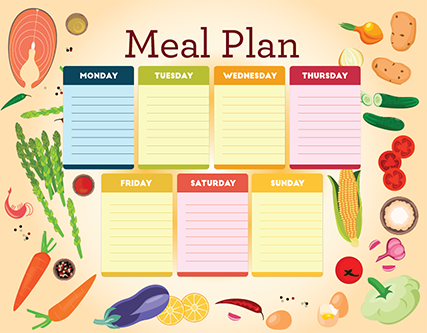
How to Build a Meal Plan Based on Your Weight Goals?
Share
Building a meal plan based on your weight goals involves considering your calorie needs, macronutrient distribution, and food choices. Here's a step-by-step guide to help you create a meal plan tailored to your weight goals:
-
Determine your weight goal: Decide whether you want to lose, maintain, or gain weight. This will provide a target for your calorie intake.
-
Calculate your calorie needs: Use an online calorie calculator or consult a healthcare professional to estimate your daily calorie requirements based on factors such as age, gender, height, weight, activity level, and weight goal. This will serve as your starting point.
Use our Calorie Calculator to calculate -
Set your macronutrient ratios: Determine the distribution of macronutrients (carbohydrates, proteins, and fats) that suits your needs and preferences. A common approach is to allocate 40-50% of calories from carbohydrates, 20-35% from fats, and 25-40% from proteins. Adjust these ratios based on your specific goals and dietary preferences.
-
Divide your calories into meals and snacks: Decide on the number of meals and snacks you want to consume each day. A typical approach is three main meals (breakfast, lunch, and dinner) with two or three small snacks in between.
-
Choose nutrient-dense foods: Focus on whole, unprocessed foods that provide essential nutrients while avoiding excessive added sugars, unhealthy fats, and refined carbohydrates. Include a variety of fruits, vegetables, lean proteins, whole grains, legumes, and healthy fats in your plan.
For Weight Management programme click here -
Plan portion sizes: To achieve your desired calorie intake, determine appropriate portion sizes for each food group. This can be done by using measuring cups, a food scale, or visual estimation.
-
Be mindful of portion control: While planning your meals, keep portion control in mind to avoid overeating. Include a balance of protein, fiber, and healthy fats in each meal to promote satiety and prevent cravings.
-
Allow for flexibility and enjoyment: Incorporate foods you enjoy in moderation to ensure long-term adherence to your meal plan. It's okay to have occasional treats or indulge in your favorite foods, as long as it fits within your overall calorie and macronutrient goals.
-
Monitor and adjust: Keep track of your progress by weighing yourself regularly and assessing how you feel. If you're not progressing towards your weight goal, you may need to adjust your calorie intake or macronutrient ratios accordingly.
-
Seek professional guidance: If you have specific dietary requirements, health conditions, or if you're unsure about creating a meal plan, consult a registered dietitian or nutritionist who can provide personalized advice and support.
We at Nutrition4us.Com offer full support to our customers. We set periodic calls (zoom or Whatsapp) with our customers to go over progress and any question comes up.
Remember, building a meal plan is a dynamic process that requires experimentation and adjustments. It's essential to listen to your body's cues, monitor your progress, and make modifications as needed to achieve your weight goals in a healthy and sustainable manner.
